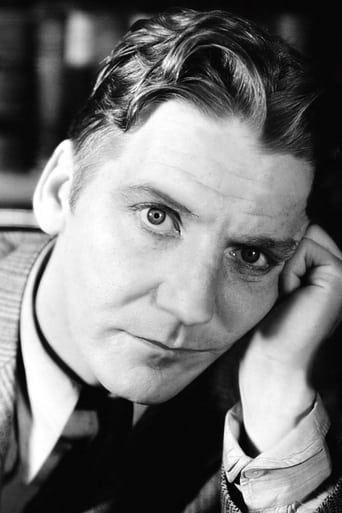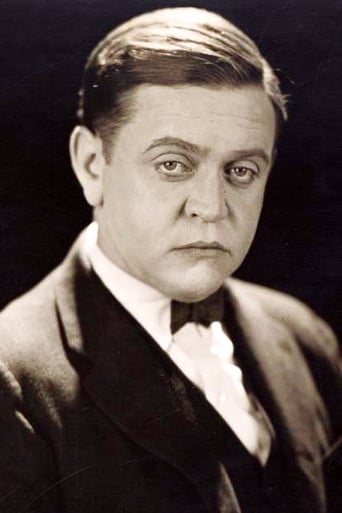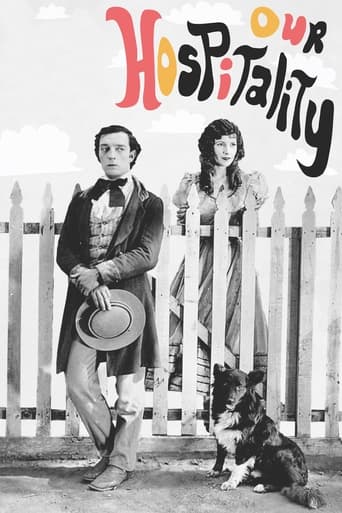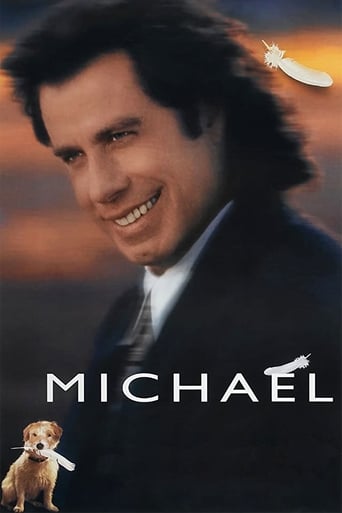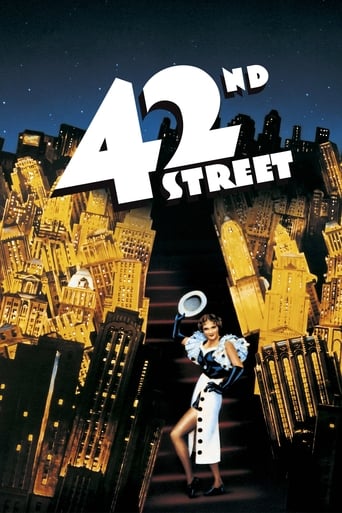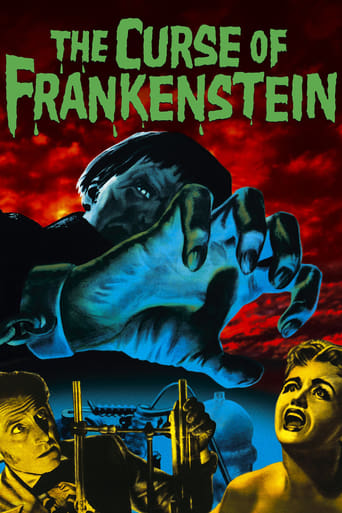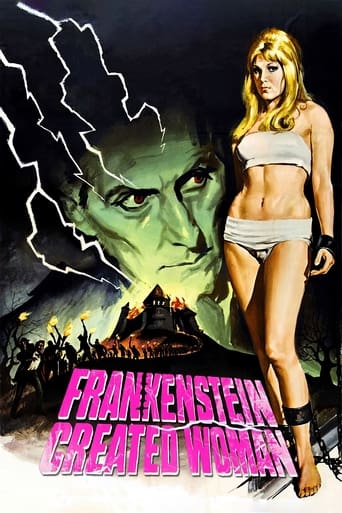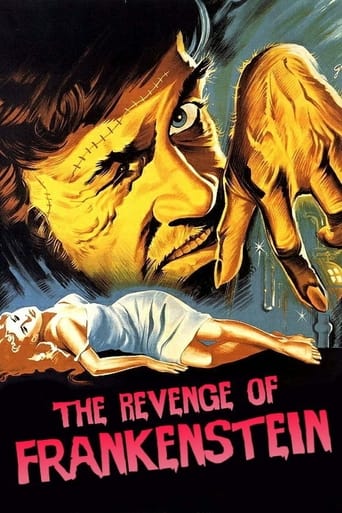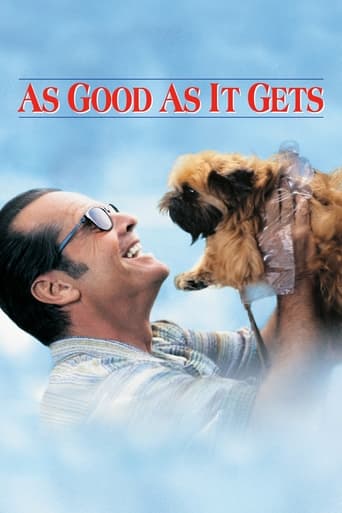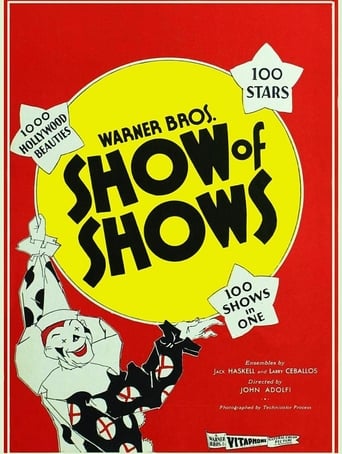
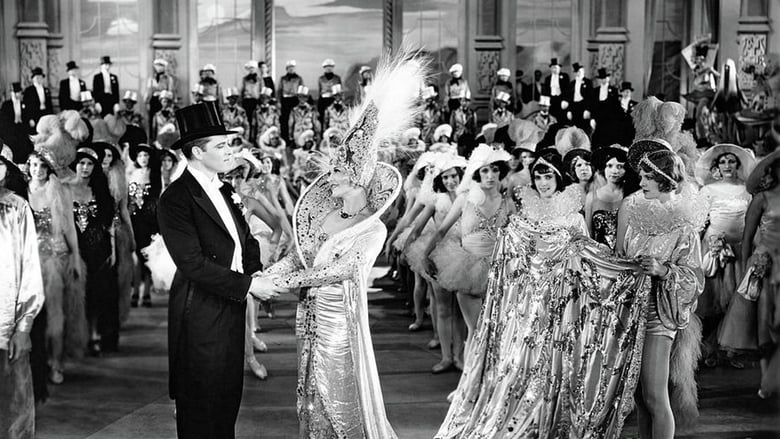
Show of Shows (1929)
Now hear this. The studio that gave the cinema its voice offered 1929 audiences a chance to see and hear multiple silent-screen favorites for the first time in a gaudy, grandiose music-comedy-novelty revue that also included Talkie stars, Broadway luminaries and of course, Rin-Tin-Tin. Frank Fay hosts a jamboree that, among its 70+ stars, features bicyclers, boxing champ Georges Carpentier, chorines in terpsichore kickery, sister acts, Myrna Loy in two-strip Technicolor as an exotic Far East beauty, John Barrymore in a Shakespearean soliloquy (adding an on-screen voice to his legendary profile for the first time) and Winnie Lightner famously warbling the joys of Singing in the Bathtub. Watch, rinse, repeat!
Watch Trailer
Cast
Similar titles
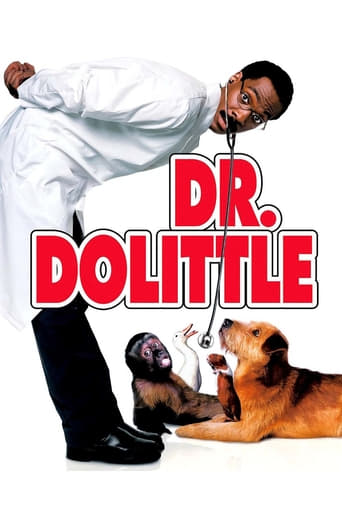
Reviews
A different way of telling a story
The best films of this genre always show a path and provide a takeaway for being a better person.
A terrific literary drama and character piece that shows how the process of creating art can be seen differently by those doing it and those looking at it from the outside.
It is an exhilarating, distressing, funny and profound film, with one of the more memorable film scores in years,
Athletes are Required to Endure Grueling Exercises to Stay in Shape and Film Archeologists are Required to Sit Through Things Like This to Attain Well Earned Knowledge of Movies in an Historical Context.After Experiencing 2+ Hours of this Vaudevillian Venture the Head Aches (just like the athlete's muscles) and Many a Film Buffs will Breathe Easier when the Final Curtain is Dropped. Calling this Dated is to be Polite. It is Not Only Dated but Dismal. There are a Few Productions that are Mildly Entertaining but the Constant Parade of "Entertainers" is at Best a Mixed Bag and at Worst a Delusional Drudgery that Only the Most Die Hard of Movie Maniacs could Enjoy.The Transition to Sound was a Work in Progress for Hollywood in 1929 and the Work was Not Always Pretty and Mostly Painfully Embarrassing. This Film Suffers from a Static Camera and the Musical Numbers Featuring a Bevy of "Beauties" Photographed 90% of the Time in Extreme Long Shots and the Result is Eye Strain. The Amount of Effort it Took to Stage these Things is Lost on the Audience Most of the Time with Everyone Appearing Like Kaleidoscopic Ants. The Songs are Novelty at Best but Mostly God-Awful. Much of the Movie was Shot in Color but Only B&W Prints Exist, with Only One Color Production Remaining and it Manages to Provide One of the Film's Few Highlights. There are a Couple of Other Segments that are Interesting. But this Clunker is Only of Interest to Film Fanatics and Vaudeville Aficionados. Only a Sadist would Recommend this to Anyone Else.
As other posters have noted, this is really a difficult film to rate. Judging it by modern standards it's awful--overblown, creaky, flat and primitive--but judging it by 1929 standards I can see where audiences must have bowled over by it. They could see their favorite stars--mostly from the silent days--like they had never seen them before, playing themselves and, in many cases, doing things they had never done, such as singing, dancing and comedy routines. Overall, though, it's poorly staged by director John G. Adolfi, who was not one of Warners' top-rank directors and was known for making "serious" melodramas; why Warners picked him to direct this big, splashy, musical comedy revue is incomprehensible. Whatever the reason, he seems to have functioned more as a traffic cop than a director.Some of the musical numbers are fair to middling, but others are just flat-out embarrassing. Probably the worst routine in the picture is the "Rifle Execution" skit. It's supposed to be funny, but it doesn't even rise to the level of a bad Benny Hill routine. It's utterly, completely and totally unfunny, with nary a laugh, chuckle, smirk or even a titter and is further hampered by the irritating Frank Fay trying to upstage everybody, and failing miserably. It's also in incredibly bad taste; there's nothing funny about a man placed in front of a wall with his hands tied behind his back about to be executed by a firing squad--and at the end of the "skit" he actually is! Unbelievable.The opening number, with 100 or so showgirls doing precision dancing on a huge staircase a la Busby Berkeley, is actually impressive, however; the very intricate routine is shot in one long take and comes off without a hitch. It's pretty much downhill after that, though, except for Winnie Lightner's two musical numbers, which are infectious and enjoyable. Most of the "comedy" routines performed by stars not known for comedy--and even some who are--come across as forced, flat and, even worse, unfunny. Probably the worst "performance", however, is by emcee Frank Fay, a Broadway star of the era. He comes across as an obnoxious ham, his feeble attempts at singing and comic patter are annoying, and his introductions to each of the featured numbers are clumsy, inept and overlong. As an emcee, he is an abysmal flop. Why he was considered a star isn't readily apparent at all.This film is much more valuable as an historical document than as entertainment, which it barely achieves. Many of the stars--70+ of them--I had heard of before but had never seen them in anything (e.g., Lloyd Hamilton, Winnie Lightner, Bea Lillie and Alice Day), so it was at least interesting to finally see them in action, as it were. A young but recognizable Loretta Young and her sister Sally Blane perform in a very strange number that features teams of well-known sisters dressed as "Dutch maids" singing and dancing in a "Ziegfeld Girls" type of big splashy routine. The number also features a young and unrecognizable Ann Sothern, when she was using her real name of Harriet Lake, with her sister Bonnie Lake.The film is a very mixed bag--everybody from John Barrymore to Rin-Tin-Tin puts in an appearance--and difficult to slog through at times, only occasionally rising above mediocrity. Worth a look once for its historical significance, but that's about it.
Thanks to Warner Archive, I can once again see this mammoth variety show which throws in everything but the kitchen sink. (The bathtub, however is present.) This film gives screen time to every person who was under contract to Warners at the time. If some of the artists seem unfamiliar to some, it is because they were big in the silent days, and most faded with the popularity of the talkies. There are some truly remarkable artists from the vaudeville era as well. You will be most impressed with Winnie Lightner, who performs two numbers. Also there is that French star, Irene Bordoni who croons a love song in a sexy manner. Perhaps one of the biggest highlights is the two-strip Technicolor "Chinese Fantasy," which has been restored for this version. It is truly beautiful and it stars Myrna Loy and Nick Lucas. Finally, there is the massive "Lady Luck" finale which goes on for nearly a quarter of an hour. If you have seen Ken Russell's 1971 cult-musical The Boy Friend, you will see that Mr. Russell must have been influenced by some of the numbers in The Show of Shows. The costumes as well as some of the choreography reflect this. The Technicolor segment has been perfectly edited into the black-and-white print in a way that is superior to the similarly restored color footage in films like Sally or Mammy. Opening and closing with a red curtain, the number looks like it always belonged there, even in the black-and-white print. In addition, the color is extremely vibrant, and gives one an idea of the tremendous impact the color must have had on 1929 audiences. The Lady Luck finale, featuring pretty young things attached to chandeliers and curtain pulls, certainly gets my vote for the most outrageously lavish production number of 1929. The Warner Brothers wanted something really big to close out the year, and they actually beat MGM here. It would come in the years that followed that MGM would snatch the lavishness crown away from every other studio and retain it until Hollywood's golden age came to a close.
"Show of Shows" is one of the worst films made in the early talkie period and the worst of all the great reviews. Warner Brothers tried to one-up all the other studios by making an all-Technicolor review (although "King of Jazz" was all color) and making it longer than any of the others. Their plans were thwarted when 15% of the movie had to be filmed in black and white due to lack of Technicolor cameras. Winnie Lightner's two numbers save the film from total oblivion, but otherwise beware. This supposed musical comedy opens with a French revolution scene. A poor soul is dragged up to the guillotine and his head is lopped off. Someone in the background then shouts, "Now on with the Show Of Shows!" It goes downhill from there.
